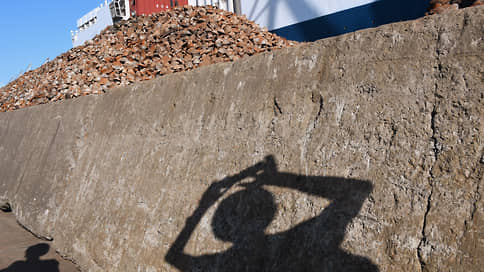Ports smell of ammonia
[ad_1]

The Ministry of Industry and Trade has prepared amendments to the legislation allowing the placement of chemical, hazardous, toxic and explosive substances in the water protection zones of seaports. This was done to facilitate the implementation of projects to create capacities for transshipment of ammonia and methanol in Russia. Previously, there was no urgent need for them, since historically transshipment went through Ukraine and the Baltic states. But as a result of hostilities and a tough conflict with the West, alternative export capacities were needed.
The Ministry of Industry and Trade has developed a draft amendment to Art. 65 of the Water Code of the Russian Federation, which ensure the removal of restrictions on the placement of chemical, hazardous, toxic, explosive and poisonous substances within the boundaries of water protection zones for the territories of seaports. A prerequisite will be the placement of these substances in specialized storage facilities. This was reported by the Telegram channel “Green” serpent, the information was confirmed to Kommersant in the Ministry of Industry and Trade.
The ministry explained that the project was prepared in pursuance of the instructions of First Deputy Prime Minister Andrey Belousov as part of the roadmap for the development of port facilities for transshipment of non-hazardous dry mineral fertilizers, ammonia and methanol in the Russian Federation. The document was approved by the Ministry of Transport, the Ministry of Construction and the Ministry of Natural Resources and has now been sent to the Ministry of Justice.
“The changes will contribute to the development of port capacities and flexibility in transshipment of products demanded by the industry, with unconditional compliance with safety requirements,” the ministry assured. The Association of Commercial Sea Ports (ASOP) considers it “inappropriate” to give a legal assessment of the bill at this stage, since it has not been officially approved and considered, as well as public discussion.
According to the “road map” (“Kommersant saw the edition of the end of December 2022), in 2023 the volume of port capacities for transshipment of the categories of goods mentioned in the document should amount to 43.75 million tons, of which 0.54 million tons will fall on ammonia, which has been handled so far in the country, and 2.2 million tons – for dry hazardous mineral fertilizers. By 2030, the total capacity in the category should increase to 99.25-107.25 million tons, depending on the decisions on the construction of a terminal for transshipment of dangerous goods at the Primorsky UPC. Of these, 2.2 million tons should be hazardous dry cargo, 3 million tons – hazardous liquid mineral fertilizers, 4.85 million tons – ammonia and 3 million tons – methanol.
Russia is the world’s largest exporter of ammonia (4.4 million tons in 2021), but does not have its own transshipment facilities. The deficit became especially acute due to the closure of the Togliattiazot ammonia pipeline to Odessa on the very first day of the Russian military operations in Ukraine on February 24, 2022.
Now Togliattiazot is building an offshore ammonia transshipment complex in Taman, the first stage for 2 million tons per year is planned to be launched at the end of this year (see Kommersant dated March 2). The road map also includes 0.85 million tons of ammonia transshipment at the EuroChem terminal in Ust-Luga, 3 million tons from 2027 and 6 million tons from 2029 of liquid fertilizers, ammonia and methanol transshipment at the Baltic methanol terminal and up to 15 million tons of the corresponding cargo at the Primorsky Criminal Procedure Code when the estimate documentation is adjusted.
The needs of the industry for the transshipment of all items subject to the project this year are estimated at 14.6 million tons, including 7.7 million tons of hazardous dry, 1.3 million tons of hazardous liquid mineral fertilizers, 4.08 million tons of ammonia and 1 .5 million tons of methanol.
Officially, the producers of chemical fertilizers, ammonia and methanol declined to comment. A Kommersant source in the market notes that the legislation is “actually being adjusted to the current circumstances.” Kommersant’s interlocutor emphasizes that a few years ago there was no need for internal transshipment, since historically transportation went through Ukraine or the Baltic states, where the corresponding infrastructure was formed. At the same time, Kommersant’s source is confident that there will be no significant problems in creating Russian transshipment facilities. Kommersant’s interlocutor at a large chemical company adds that they are interested in transferring ammonia transshipment to Russia.
[ad_2]
Source link





